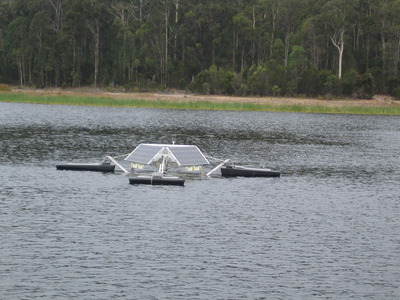Using the sun to solve water quality problems
Monday, 18 June, 2012
When Eurobodalla Shire council was looking to control blue green algae and improve dissolved oxygen and pH levels at Deep Creek Dam, it installed five SolarBee long-distance water circulators.
Water is transferred from the Moruya River to Deep Creek Dam for storage, allowing the council to harvest large volumes of water for public supply that would otherwise flow out to sea.

As well as improving oxygen and pH levels, the SolarBees prevent stratification. The solar-powered circulators use near laminar flow technology that provides high-flow, long-distance circulation in water reservoirs.
The SolarBee solves water quality problems while providing significant energy savings and reducing the need for toxic chemicals. Replacing the aerators previously used in the dam with the five SolarBees is claimed to have resulted in the council saving 68% of its annual electricity costs. This saving will escalate as power costs continue to rise. The power savings mean, in effect, that the council’s investment in the long-distance circulators will be paid off within three years.
With the circulators installed, power costs are eliminated as the machine uses only solar power and requires minimal maintenance and no infrastructure changes.
Other advantages of using SolarBee technology include: prevents and controls harmful blue green algae blooms; reduces taste and odour problems in drinking water; reduces public health issues and improves aesthetics, water quality and biodiversity; reduces invasive aquatic weed growth; improves fish habitats, prevents fish kills and benefits fish spawning, production and survival; economical for freshwater lakes, reservoirs, wastewater and potable storage tank applications; pumps up to 38,000 L/min distributing water radially in all directions; constant 24-hour day and night operation using only solar energy; requires no in-lake infrastructure or land-based energy supply; minimal maintenance and 25-year expected operational life; and one large machine can cover up to 14 hectares of water surface area in freshwater applications.
Tallawang Solar Hybrid project secures access rights
Potentia Energy's proposed Tallawang Solar Hybrid project has secured access rights in the...
Fluoride boosts water-processed perovskite solar cells
Queensland University of Technology has developed a water processing method to fabricate more...
Multibuild solar installation delivered at City of Playford
Trinasolar partnered with Venergy Solar to deliver a multibuild solar installation across the...








